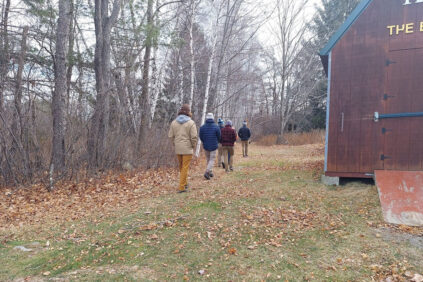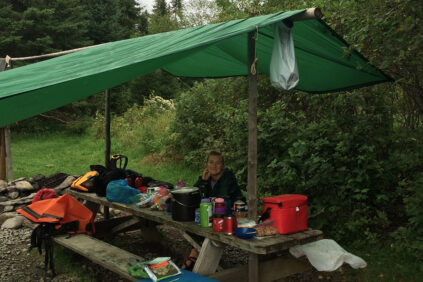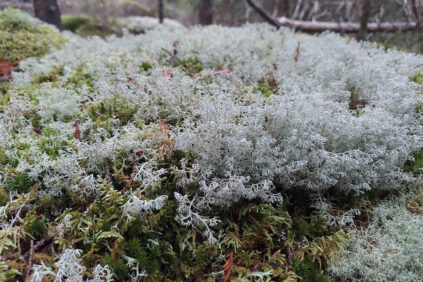Travel and Camp on Durable Surfaces
When recreating in the Maine outdoors it is important to both travel and camp on durable surfaces. This will help minimize the impact you have on your surroundings while interacting with the outdoors.
Here’s the hand sign to help you remember LNT Principle 2: Travel and Camp on Durable Surfaces
Stay on the Trail
When trails are Constructed and used they have an impact on the land; however, they are a necessary response to the fact that people travel in the backcountry. Concentrating travel on trails reduces the chance that other routes will develop and scar the landscape. It is better to have one well-designed route than many poorly chosen paths. Since these other routes can be destructive to the local wildlife. Sticking to these trails even if they are single file is crucial to preventing trail widening which increases impact.

Durable Surfaces
Camping and traveling on durable surfaces is crucial to minimizing impacts. Examples of durable surfaces can include:
- Rock, Sand, and Gravel: These surfaces are highly durable and can tolerate repeated trampling and scuffing. However, lichens that grow on rocks are vulnerable to repeated scuffing.
- Ice and Snow: The effect of travel across these surfaces is temporary, making them good choices for travel—assuming good safety precautions are followed and the snow layer is of sufficient depth and firmness to prevent vegetation damage.
- Vegetation: The resistance of vegetation to trampling varies. Careful decisions must be made when traveling across vegetation. Select areas of durable vegetation or sparse vegetation that are easily avoided. Grasses are resistant to trampling, but most forest herbs and ferns are fragile and quickly show the effects of trampling. Wet meadows and other fragile vegetation quickly show the effects of trampling. Trampling encourages new and inexperienced travelers to take the same route and leads to undesirable trail development. As a general rule, travelers who must venture off-trail should spread out to avoid creating paths that encourage others to follow. Avoid vegetation whenever possible, especially on steep slopes where the effects of off-trail travel are magnified.
-
-

Going off trail
“Off-trail” refers to all travel that does not utilize a designated trail, such as travel to remote areas, searches for “bathroom” privacy, and explorations near and around campsites. Backcountry travelers should always do their best to stick to existing campsites and trails. However, they can also spread use and impact in pristine areas. A way to do this is to choose a different trail or campsite if the one you are planning on using is busy. By doing this you are helping to prevent the expansion or creation of new trails and campsites due to overcrowding. The impacts of leaving the trails do vary with location with some forms of vegetation being especially susceptible to trampling and taking decades to regrow.

